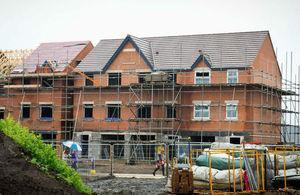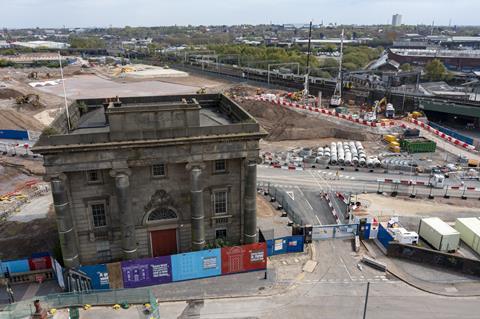The CPA says modest growth will not be enough to offset pandemic fall in public housebuilding work
Housebuilding activity is expected to grow modestly over the next two years but will fail to reach the levels seen in the year prior to the pandemic, a report has forecast.
The latest forecast from the Construction Products Association (CPA) said the industry should expect growth in output of around 3% both this year and next, with the failure to return to pre-pandemic levels a result of the steep fall in public housebuilding during 2020.
The CPA said it estimated that housing output was £42.4bn in 2021, and will rise to £43.7bn this year and to £45bn in 2023, with 3% growth forecast in both public and private housebuilding in both years. This compares with output of £46.2bn in 2019, prior to the coronavirus pandemic.

However, it said that while private housebuilding work will re-top its pre-covid level of £39.1bn in 2023, with output of £39.3bn, public housebuilding will remain well down on the 2019 figure. It forecast public housing output of £5.7bn next year, compared to £7bn in 2019.
Private starts are forecast to hit 160,000 this year, up from 153,000 in 2021, with completions hitting 164,000.
The CPA’s forecast said that the steady growth expected in housing will come despite continuing headwinds faced by the sector from the supply and cost of materials, with “major house builders […] the best placed firms in the construction sector to deal with the availability and cost inflation issues.”
The report said: “The indications the CPA had from the majors towards the end of 2021 were that demand is likely to remain strong for at least the first six months of 2022.”
It added that “affordability, planning issues and the impacts of the move towards net zero” were likely to be the big issues affecting performance in the end of this year and in 2023.
Although the CPA said house price inflation is likely to be brought down by the end of the stamp duty holiday and a further winding down of the Help to Buy scheme, it said that most major housebuilders are reporting healthy profit margins and strong-near term demand for housing across the UK.
Construction output will grow by more than 4% overall this year with housebuilding and infrastructure driving the post-covid rebound, the report said. The group said the figures represent the “remarkable resilience” of the construction sector to lockdown restrictions and the end of the Brexit transition period.
But it warned that materials supply issues, despite easing in recent months, are still the biggest challenge to overall growth and could cause problems in the industry’s peak spring period.

Growth in private housing repair and maintenance output is forecast to flatten out due to rising inflation and renovation costs but is still expected to match last year’s historic level of 17%.
Meanwhile, infrastructure will be the “main driver” behind the industry’s growth over the next year, with the sector expected to rise by 9.7% this year and 1.1% in 2023 as work continues on HS2, Hinkley Point C and the Thames Tideway tunnel.
But it said big projects had seen delays due to material supply issues, which could result in some work being pushed back to next year.
The report added worries over sufficient materials, products, labour, HGV drivers and imports remained, with SMEs and smaller specialist sub-contractors likely to feel the pinch more than larger firms.
CPA economics director Noble Francis said: “Major house builders and main contractors are less affected as they have better visibility of medium-term demand and can plan and purchase well in advance; plus, they are the larger customers of the manufacturers, builders’ merchants and importers.
“Smaller firms, however, have found that availability issues have delayed projects and, consequently, revenue streams whilst sharp cost increases have hit margins, harming their viability even though they have strong workloads.”
Last week, the Construction Leadership Council said there were “relatively good” stocks of most materials but that some were still seeing challenges including bricks, blocks, roof tiles, steel lintels, manhole covers and certain sealants, coatings and paints.
It added that issues with bricks would linger until three new UK brickmaking plants open in 2023 and 2024.










No comments yet